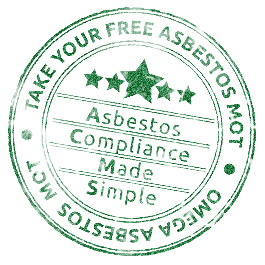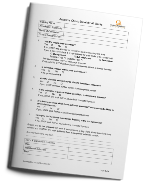Today we’re going to get a bit controversial.
Question: can one asbestos fibre kill?
Answer: NO.
I often get asked this question and I often hear people within the industry say that one fibre can kill. Yes, one fibre will create a ‘risk’ but a very, very low and somewhat insignificant one in my opinion. Saying 1 fibre can kill is like saying if you smoke one cigarette, you’ll definitely get lung cancer. Not true.
The great thing about us humans is that we’re all unique; even identical twins are unique. We all have different tolerances to life (or death). So if we take take two people of the same age and relative fitness and expose them to exactly the same amount of asbestos fibre over exactly same time period.
The result? Would only one die of an asbestos related disease? Or would they both die? Or would neither of them die? No one could predict it, we’re all different and it’s not really an ethical experiment to carry out is it! Prevention is the only safe bet here.
Fact: each exposure increases the risk of developing asbestos disease.
There is no set ‘safe’ limit. The clearance indicator of 0.01 f/ml or the Control Limits of 0.1f/ml (over 4hrs) and 0.6 f/ml (over 10mins) are not safe levels. They relate to working with asbestos and the control measures needed but they have been adopted or assumed as safe limits for normal occupancy of buildings.
What we need to consider is that, firstly, asbestos is a natural fibre and secondly, that us Brits liked to use it in our buildings, especially during the 1950’s – 70’s but also in the 1980’s and up to 1999 for the lower risk materials. So it can be in the ground in rocks, it’s in our buildings, its being disturbed, damaged, deteriorating, removed, fly-tipped, transported to landfill etc. It’s around us is the point.
Research (DETR 1999) states that background airborne fibre levels commonly found outdoors are between 0.000001 f/ml and 0.0001 f/ml; with the former being accepted as outdoor rural and the latter as outdoor urban levels. This could also be written as 1 to 100 fibres per cubic metre of air.
Furthermore a level of 0.0005 f/ml is stated as a level for school buildings where asbestos is in good condition. This is the same as 500 fibres per cubic metre of air. This would be deemed acceptable.
When asbestos is removed or repaired, acceptable is less than 0.01 f/ml OR 10 fibres per litre OR 10,000 fibre per 1m3. This is 20 times greater than the normal background level for a school with asbestos in good condition. So removal should only be done if absolutely necessary.
It is therefore acknowledged that frequent exposures over a duration of time at levels greater than background levels (0.000001 f/ml and 0.0001 f/ml OR 1 to 100 fibres per cubic metre of air) are considered capable of causing asbestos disease.
Back to the question: Can 1 fibre kill? No. If it could then the current UK death rate of approx 5500 per year, would be substantially higher. The current global death rate of approx. 107,000 per year would also be a lot higher.
Fact: the more times you’re exposed, the higher the level you’re exposed to, the greater your chance of illness. Repeated exposure over a number of years is the greatest risk. Even seemingly low level exposure if repeated over time can have a disastrous effect. There is no safe level. Prevention is the only ‘cure’.
So when it comes to asbestos removal, this is a very specialist activity which usually needs a licensed removal contractor. Removal work is carried out within a controlled area (an enclosure under negative pressure) by trained and qualified professionals wearing appropriate RPE & PPE, working in a controlled fashion to mitigate risk, keep airborne fibre levels as low as possible and leave the work area suitably clean and fit for normal re-occupation.
However, here’s the bit that not many talk about or advertise:
When asbestos is removed and the area is deemed ‘clear’ and ‘fit for re-occupation’, there will still be asbestos fibres remaining. The acceptable ‘clearance’ level is less than 0.01 fibres per millilitre of air HOWEVER this does not mean absolute zero fibres are left.
Think about this: there are 1000 millilitres in 1 litre. So in 1m3 of air there are 1,000,000 ml.
At the clearance level of 0.01 f/ml, a person would inhale 6000 – 10,000 fibres per hour!
So if we take a fibre concentration of 0.005 f/ml of air this would be deemed to be a clearance ‘pass’ as it is less than 0.010.
But if we multiply this by 1,000,000 this gives us potentially up to 5000 fibres in 1m3 – and this is deemed acceptable!
Taking it further still, as not many rooms are only 1m3 – if the room was say 50m3 (eg length 4m, width 5m and height 2.5m) then there’s potentially up to 250,000 fibres remaining.
So if 1 fibre could kill, we would all be walking into a certain deathtrap after every satisfactory and ‘cleared’ asbestos removal job.
If 1 fibre could kill we would all be dead!!!
#controversy
For more information on what Omega can do for you and your asbestos compliance, please visit our website omega-asbestos.co.uk or call 0191 377 0900.



